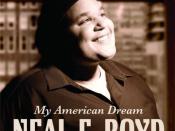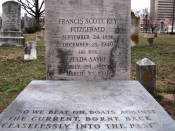As far back as colonial times when the courageous Dutch sailors first saw the fresh green islands of New York, America has always promised prosperity and self-fulfillment in return for hard work and dedication. However, when World War I finally ended, the American Dream began to wither away. Americans became more interested in pursuing materialistic goals such as wealth and prestige and lost sight of the true purpose of the dream. In The Great Gatsby by F. Scott Fitzgerald, Jay Gatsby is the ultimate symbol of this corruption. At first, his goals remain innocent and pure, however when he moves to New York, the greed of such characters as the Buchanans and Myrtle Wilson blinds him to the decay of his moral values. Eventually this interaction is the catalyst to the destruction of his dream. Even Gatsby can not escape the materialistic influence of this era.
Throughout the 1920's, society placed a greater emphasis on wealth and social status.
"The energy that [had] gone into the pursuit of noble goals was channeled into the pursuit of power and pleasure...a fundamentally empty form of success" (Zimmerman). The lifestyles of Tom and Daisy Buchanan exemplify this modern materialism. While living amongst the glittering white palaces of East Egg, they epitomize the corruption of the era. Daisy and Tom own a "cheerful red and white Georgian Colonial mansion" with beautifully crafted French windows overlooking the bay (Fitzgerald 11). Outside, the house paths of brick lead over a quarter mile of flawlessly mowed grass and through a "half acre of deep pungent roses" (Fitzgerald 12). Inside, the shelves are adorned with lavish ornaments underneath a "frosted wedding cake of a ceiling" (Fitzgerald 13). The closets conceal a vast array of brightly colored suits and glittering evening dresses. Tom's dazzling blue coupe is yet...


